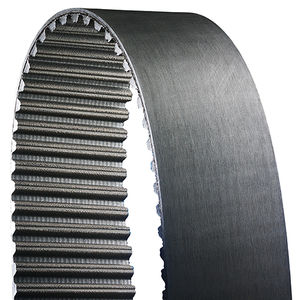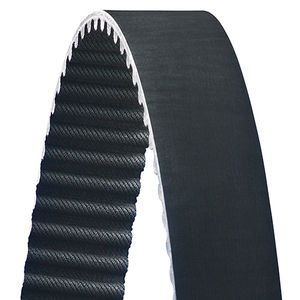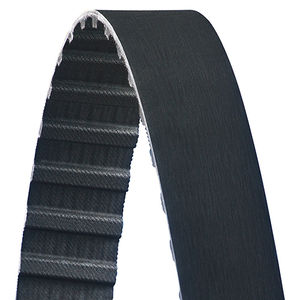
Synchronous belt PANTHER®XT polyurethanefabrictextile



Add to favorites
Compare this product
Characteristics
- Type
- synchronous
- Material
- fabric, textile, polyurethane
- Product applications
- industrial
- Other characteristics
- friction, thermal, abrasion-resistant, chemical-resistant
- Length
Max.: 4,410 mm
(173.62 in)Min.: 640 mm
(25.2 in)- Pitch
8 mm, 14 mm
(0.315 in, 0.551 in)- Temperature
120 °C
(248 °F)
Description
A powerful alternative to chain or a drop-in replacement for high torque polyurethane belts, Panther XT belts are engineered to run quietly and efficiently in the harshest environments. Carbon cord construction and abrasion-resistant, low friction tooth fabric provide strength and durability, and help reduce downtime, maintenance, and noise levels. Constructed with a high temperature and oil resistant polymer, Panther XT belts provide high thermal stability and excellent overall chemical resistance. Carbon fiber cord resists stretch and maintains outstanding belt tension stability over the life of the belt.
Features/Advantages
High tensile strength for superior load capacity
Increased durability for extended belt life
High drive efficiency and energy savings
Compact drive layout
Low maintenance
Lower noise (compared to chain and polyurethane belts)
Environmental benefits (no lubrication required)
Operation at speeds higher than most chain drives
Abrasion, wear and chemical resistance
Improved temperature operating range (better than polyurethane belts)
Applications
Roller chain applications, paper converting equipment, printing machinery, paper mills, textile equipment, HVACR, packaging equipment, conveyors, exercise equipment, industrial machinery, and more
Catalogs
No catalogs are available for this product.
See all of Timken Belts‘s catalogsRelated Searches
- Power transmission belt
- Industrial power transmission belt
- Rubber power transmission belt
- Plastic strip
- Timing belt
- Industrial belt
- Sturdy belt
- PU belt
- V belt
- Synchronous power transmission belt
- Oil-resistant power transmission belt
- Trapezoidal power transmission belt
- Flexible belt
- High-performance power transmission belt
- Pulley power transmission belt
- High-resistance power transmission belt
- Abrasion-resistant strip
- Heat-resistant power transmission belt
- Machine power transmission belt
- Ribbed power transmission belt
*Prices are pre-tax. They exclude delivery charges and customs duties and do not include additional charges for installation or activation options. Prices are indicative only and may vary by country, with changes to the cost of raw materials and exchange rates.







